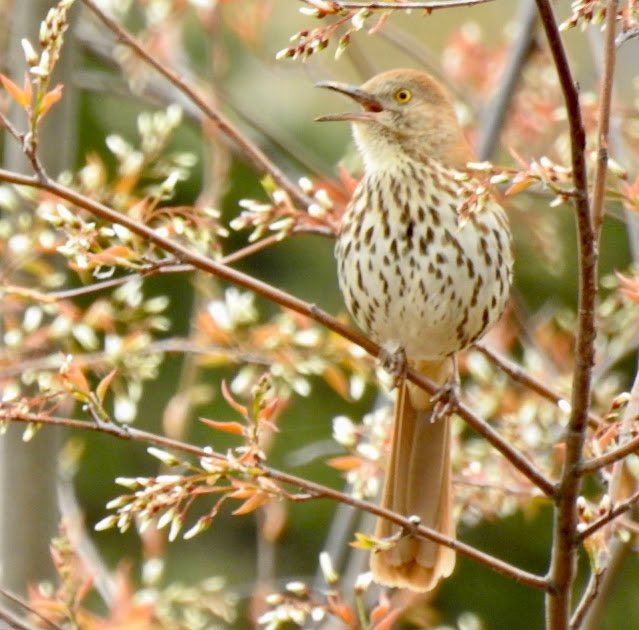I was visiting a friend's yard last week (May 27) to try to see the Orchard Oriole which had arrived there the day before. I had no luck with the Oriole but I heard an unusual bird song which I immediately identified as a House Wren. I invited my friend to come outside and listen and was able to show her the House Wren sitting on the top of the tallest spruce tree singing its heart out. The photos in this blog are of that beautiful little songster.
The House Wren is not common here in New Brunswick. It is officially listed as a very rare summer resident and migrant. Reports are usually from along the St. John River and there are only a few breeding records. So, most of our singing males do not find mates. We are at the northeastern limit of its range so only a few make it here. It is, however, a common inhabitant over much of the US and the most southern aspect of Canada which includes southern Ontario and Quebec but not the Maritimes. It winters in the southern US and Mexico.
Historically there were three reports of House Wrens in New Brunswick in the 19th century. In the first half of the 20th century there were reports of only about 20 to 30 individuals (Austin Squires, The Birds of New Brunswick). We have had many more reports in recent years including breeding records so the species appears to be moving slowly northward into our province. Long-term population increases have been documented. The species is tolerant of human activity which favours its survival success.
House WrenThe House Wren is the ultimate 'little brown bird'. It is a mere 12 cm (4.7 in) long. It is brown on the upper parts and grayish beneath. Its supercilium (line over the eye) is indistinct, a field mark which helps distinguish it from its relative, the Carolina Wren. Its tail is long and the bill is medium in length. The dull appearance of this little bird is overshadowed by its loud, effervescent song which it delivers with great gusto. The song is described as a trilling, energetic flutelike melody which is often delivered in bursts with many repeats. That is what this little ball of energy was treating us to the day we saw it.
I have also seen a pair of House Wrens nesting in the Mactaquac area. They were in the backyard of a house along the river and using a nest box. They successfully raised their brood.
House Wrens prefer habitats such as gardens, hedgerows, dense brushy patches, forest edges, shrubby areas and farmland. They nest in tree cavities and readily accept nest boxes. Five to nine white eggs with brown flecks are laid in a nest made of sticks and grasses. The female incubates the eggs for 13 to 15 days. House Wrens eat insects and they forage by gleaning insects, arachnids, millipedes and spiders from leaves and bushes.
House WrenThere are two wren species here which you would have to distinguish the House Wren from; the Carolina Wren and the Winter Wren. The Winter Wren is far more common and is a common summer resident. It is much smaller, shorter-tailed and more heavily barred. It also has a very different song (but beautiful in its own right). The Winter Wren is more secretive and hard to see. The Carolina Wren is larger, and is a brighter, richer rufous brown with a bold white supercilium. The Carolina Wren is not common here.
House Wrens are sometimes notorious for their strong territorial behaviour. They will destroy other species nests to achieve that. They have been known to destroy nests of Bluebirds no matter how far along the family is in its development. That is remarkable for such a small bird. They can indeed 'pack a punch'.










